When talking about monorails, many of us think of a train travelling on a single track. The word MONO is Latin and means single and naturally a monorail is a single rail.
Interestingly, when we applied for the Patent for our unique monorail back in the 90s, one obstruction for our Patent was a German Patent from the 50's for a monorail for trains, made in steel and 10 times bigger but working exactly as our monorail. Well, we convinced the Patent Office we are not doing trains and got the Patent!
In the facade access solutions, the train is replaced by a BMU-cradle (or suspended platform, gondola, like people also say). A complete BMU monorail system consists of an aluminium track, a trolley and a cradle.
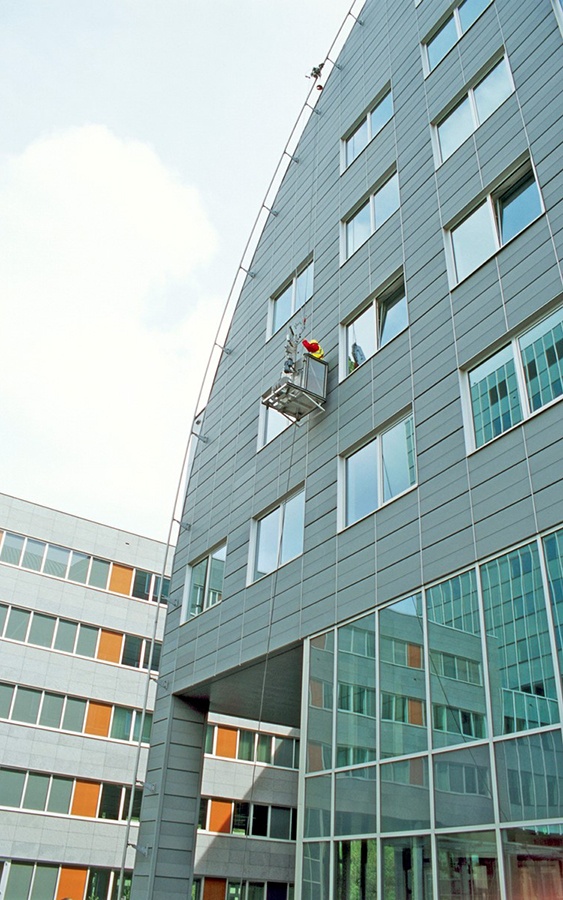 |
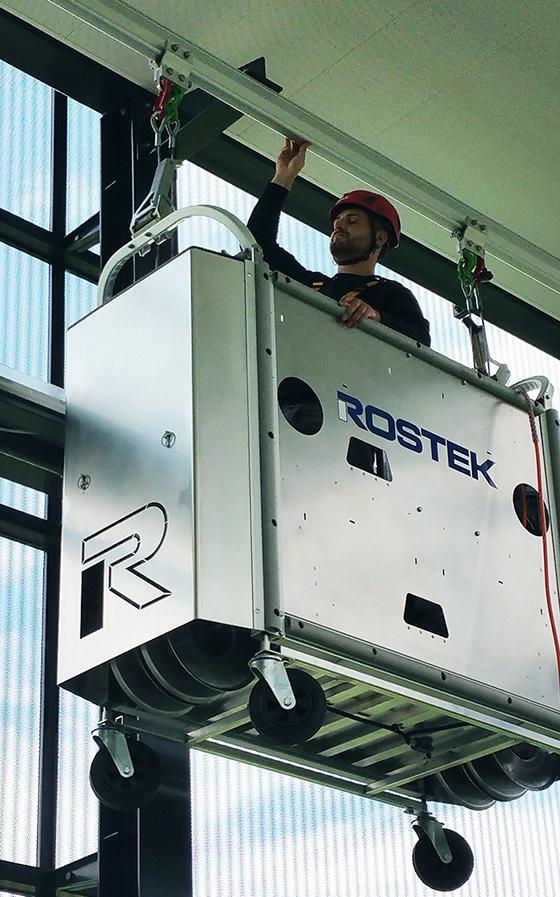 |
| One hoist BMU-cradle on climbing monorail | Two hoist BMU-Cradle |
Designed to blend with the architecture, the aluminium track is always bent according to the building shape and can have any colour. The aluminium track is mounted to the building using steel brackets which can be mounted on the face, soffit or the ceiling of a building. When mounting on the face of the building the monorail system is often seen as an architectural feature which is only clearly visible from the street level. From some distance you will not see the monorail. The ceiling and soffit mounting conceals the monorail system almost completely into the building structure. This is ideal for atria and other indoors applications where people get really close to the monorail and Architects want to hide it as well as possible.
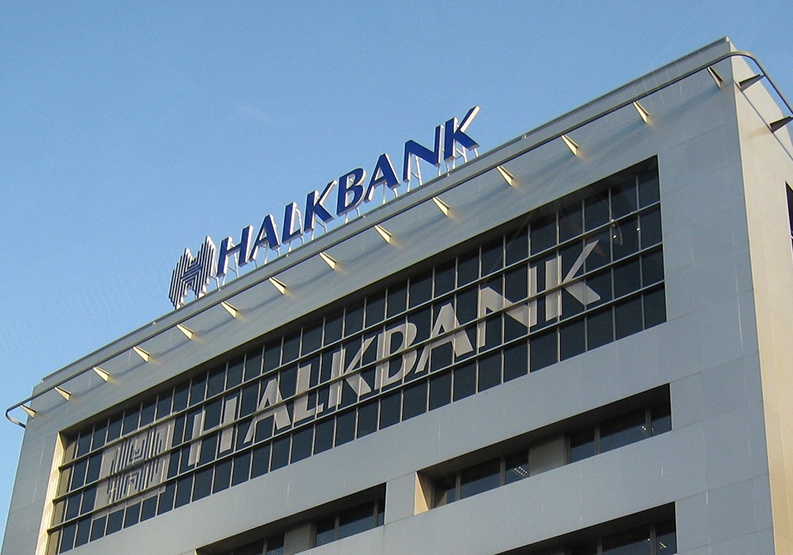 |
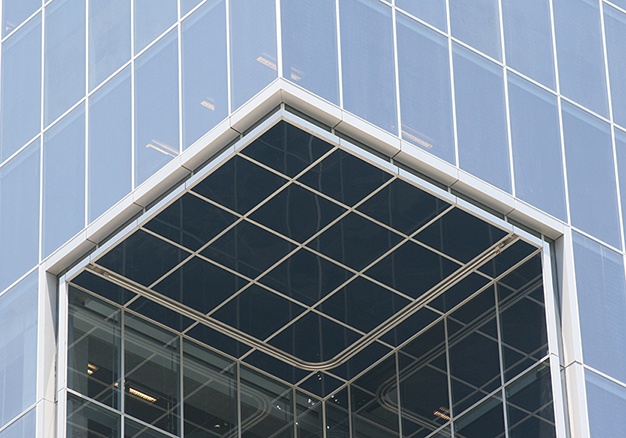 |
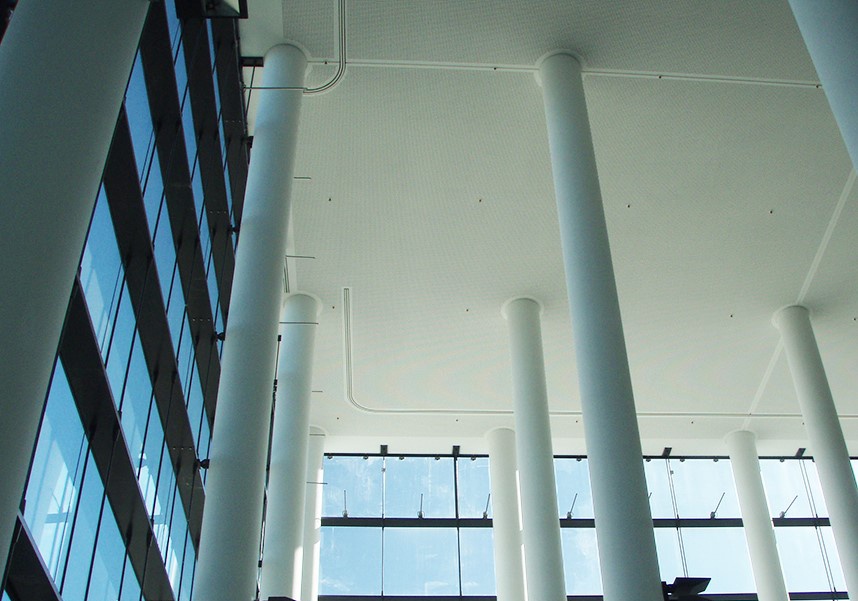 |
| Face mounted monorail | Soffit mounted monorail | Ceiling mounted monorail |
The trolley travelling along the monorail can be either motorized or manual depending on the application. A small manual trolley can be moved simply by hand, pushing and pulling from the track or the facade or by using a rope driven trolley, a few metres below the track. For more convenient movement a motorized trolley is often used and control buttons are in the cradle. For inclined monorails, a friction based motorized climbing trolley is always needed, with all the fancy safety systems. The climbing Roslift trolley can climb even vertically with full load. A BMU-cradle with one or two hoists is then suspended from the trolley(s) allowing inclined movement along the monorail. The hoist(s) in the cradle will lift the cradle up and down along the facade.
What is the monorail system best for?
There are multiple reasons to choose the monorail system for building access. Firstly, a permanently designed and installed, bespoke BMU monorail system is much better and more efficient than temporary suspended platform systems (TSP) or hydraulic machines (MEWPs, cherry pickers) or scaffolds from ground.
Secondly, using so called Spidermen (the formal name is Rope Access Technician) climbing down a facade with a primitive chair or harness system, can be very dangerous and often inefficient as so many “Spidermen” are needed to clean one facade.
When compared to a big BMU roof car, the horizontal monorail system is always a much cheaper option. The monorail system is much smaller so it is invisible from far away. When the cradle is not in use, it is taken off the track so only the monorail remains visible.
When there is limited roof space in the building, the monorail system is usually the only option, as it doesn’t require any roof space. This leaves room for “green roofs”, ventilation systems, elevator machinery or any other machines needed on the rooftop. Also, the monorail system doesn’t increase the height of the building. We have seen cases where the monorail has allowed one more floor to be built! That is Big Money.
When the roof of the building is inclined, the climbing monorail is often the only solution. In addition, if an access system is installed inside the building, a monorail system is the right solution. There is no need for big, heavy temporary access platforms or scaffolds inside the building to access the glass facades or skylights.
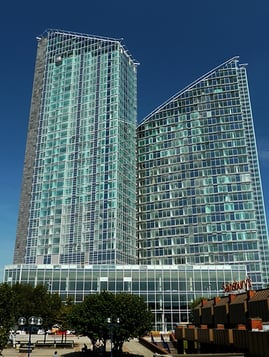 |
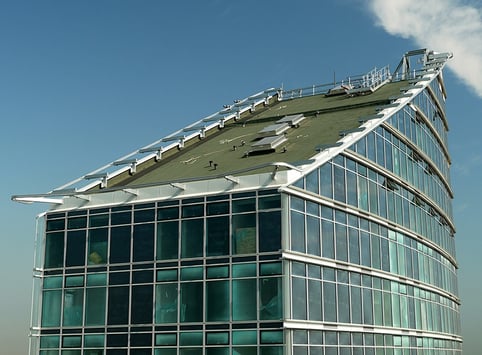 |
| Climbing Roslift monorail system on inclined roof | |
When is the monorail system not applicable?
Despite the benefits, monorail systems are not used in all buildings. As the hoists are in the cradle the higher it needs to go, the more wire ropes and power cables are needed and obviously the weight increases. Therefore the maximum vertical rise of a BMU-cradle is around 170 meters.
Higher buildings mostly have a BMU roof car on top of the roof. The monorail system has a fixed distance from the facade, therefore this system is not as versatile as telescopic roof cars for complex facades.
Finally, some consider the monorail to be ugly and therefore it is not used for aesthetic reasons. It is always debatable what is beautiful and what fits to the architecture. In your opinion, which of the buildings is more beautiful? The one with the BMU roof car or the one with BMU monorail?
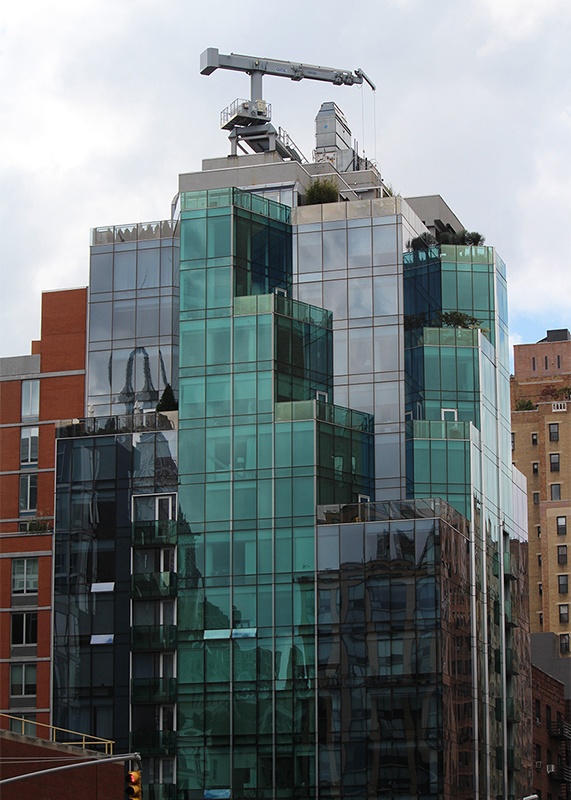 |
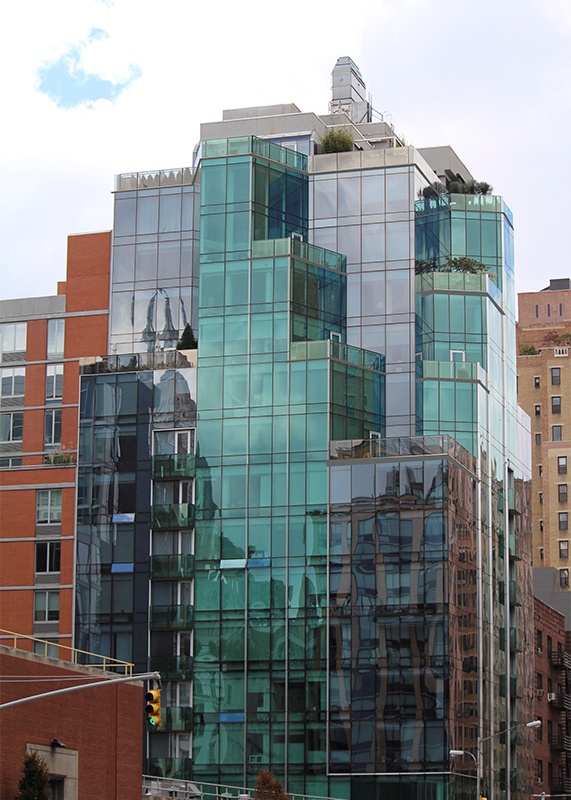 |
| BMU-crane | Monorail System |
Interested in monorail solutions or are you looking for something different? Contact us with your ideas or problems or wait for the next blog about access solutions. Meanwhile you can read the previous post about all of the facade access systems here.
Find all the datasheet from the downloadables page, or just click from the button below.


